35.98993, -78.894399
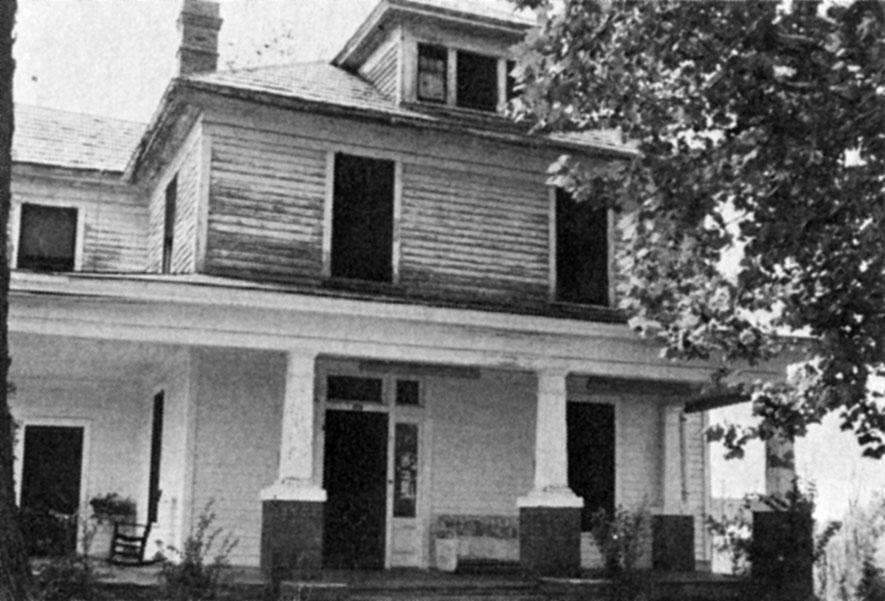
Hood Street, originally called Parrish Place, was a street of large houses at the eastern edge of the East Downtown neighborhood anchored by mansions on East Main and Dillard Streets. Around 1900, the street was put through an area that had held JR Reams' tobacco prizery house.
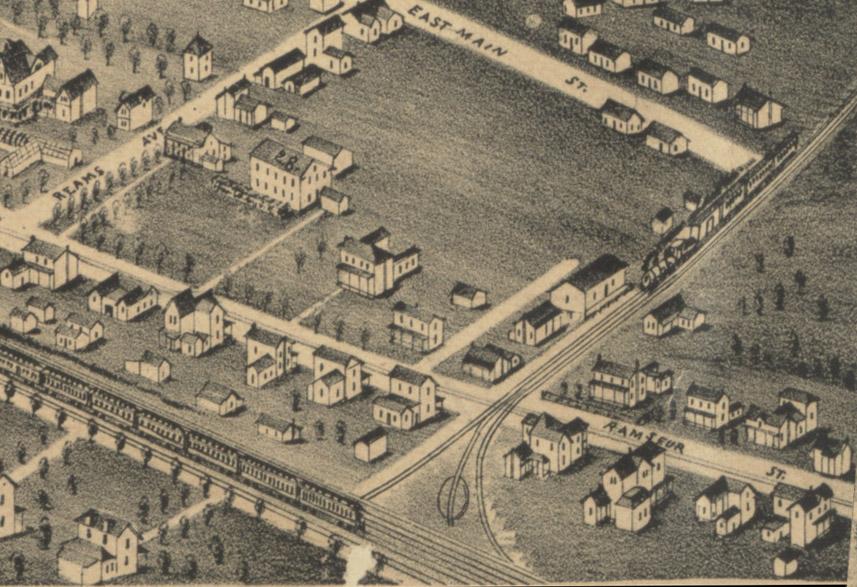
1891 - the prizery house is labelled #28. Reams Ave. later became South Elizabeth St.
(Courtesy Duke Archives)
Below, the street in 1937 (west is at the top) showing the outline of sizable houses mostly built between 1900 and 1920
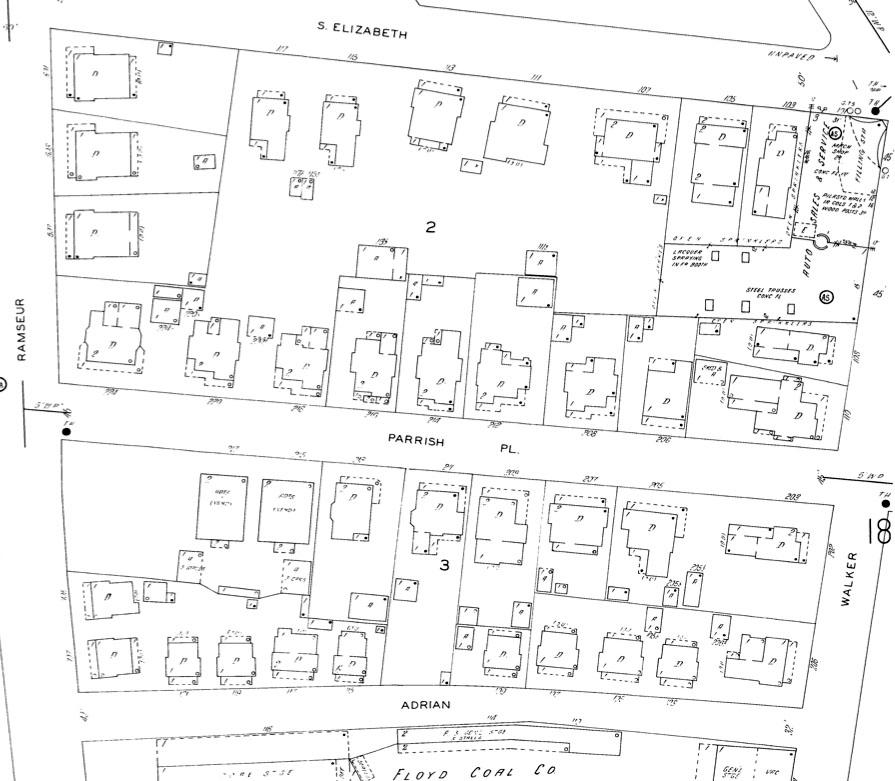
The houses on Parrish Place were not quite as lavish as the mansions to the west, but large enough to reflect the fact that they were one block to the east of Julian Carr's Somerset Villa.
By the 1930s, this area had already begun to change with the growth of downtown. As noted last week in the post about 215 Hood the apartment buildings were a 'second wave' of sorts, accompanied by retail/commercial growth along East Main St.
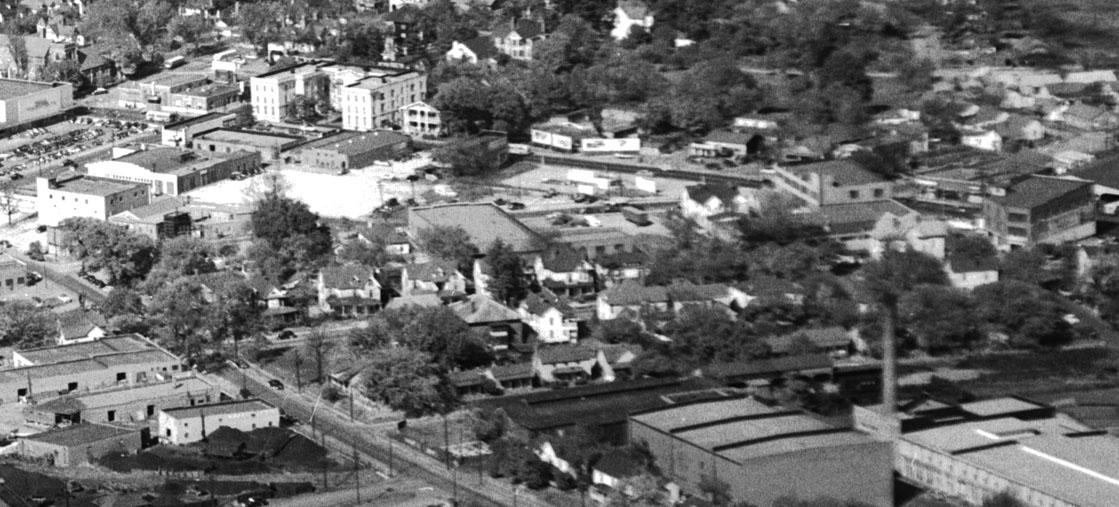
Looking northwest from the railroad tracks, 1950s - the houses that line Parrish Place are visible, with Ramseur running from back left to foreground right. Also visible are a number of previously profiled locations - Hosiery Mill No. 6 in the foreground, the trolley barn, Franklin Ct. apartments, the union bus station, St. Philip's, and Sears (now the health dept.)
(Courtesy Herald-Sun)
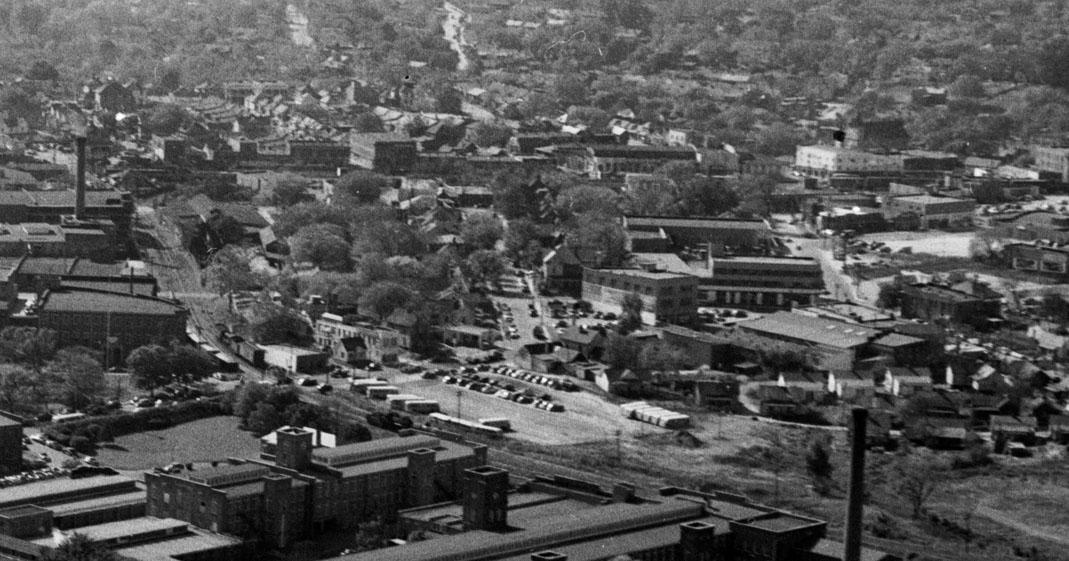
Looking southwest from above the Golden Belt Hosiery Mill, straight down Parrish Place/Hood St. Fayetteville/Elizabeth as they exist today have not been cut through yet in this 1950s photo - East Main is the cross-street in the foreground.
(Courtesy Herald-Sun)
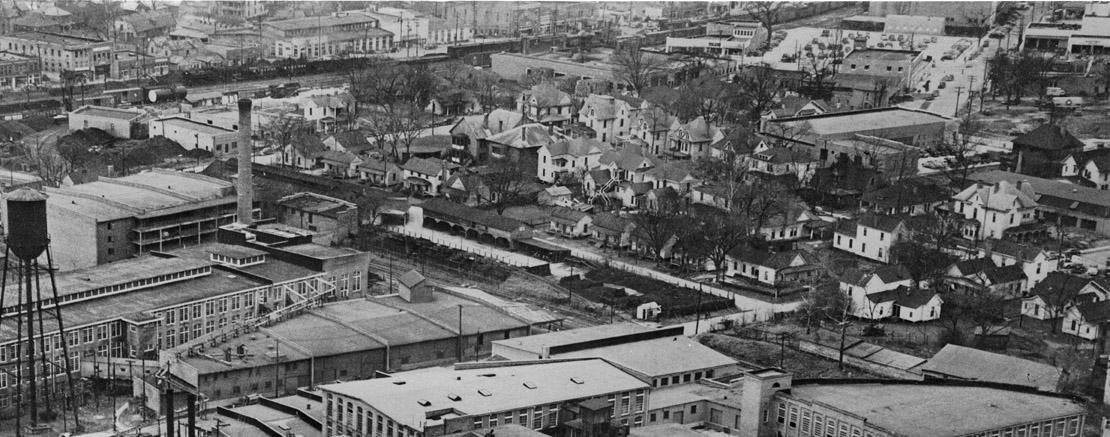
Looking southwest from above the Durham Hosiery Mill No. 1
(Courtesy Herald-Sun)
Although this area was not demolished by urban renewal, industrial change and the big Elizabeth-Fayetteville cut-through put much pressure on this neighborhood to change. By the 1970s, the only original house left on the street (then changed to Hood St.) was 209 Hood.

Looking southeast, 1970s.
As of 2007, this is a car lot.
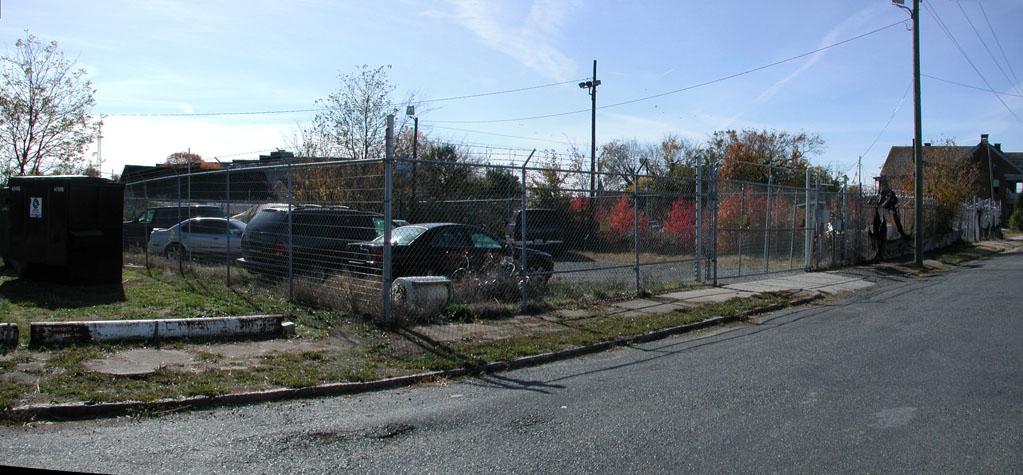
The area is pretty bleak - the apartment building at 215 Hood is the only residential structure left on the street.
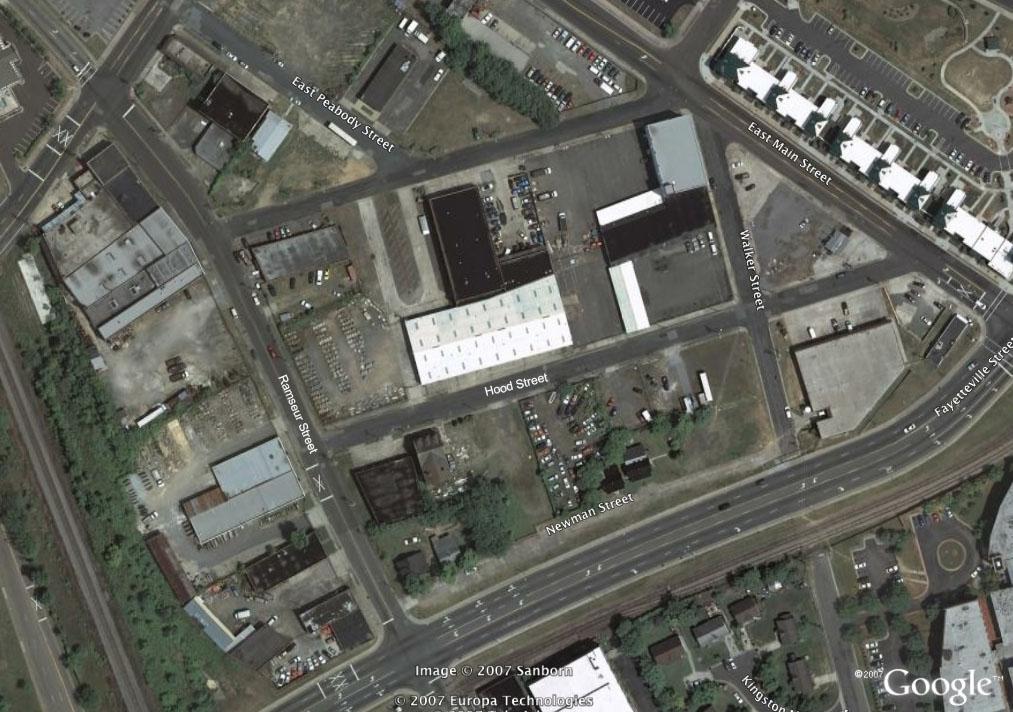
Google satellite view, 2007.

Comments
Submitted by Phil (not verified) on Mon, 11/26/2007 - 4:38am
Garry has perhaps provided this information elsewhere, but for those who don't know, a "prizery" is "a building where tobacco was "prized," or pressed layer by layer into hogshead barrels often weighing up to 1000 pounds. After the autumn harvest, the plants were first "stemmed," or stripped of fibers and then packed."
This definition was taken from The Prizery's website in South Boston, Virginia.
http://www.prizery.com/History.htm
According to this website, the a South Boston tobacco producer created "Bull Doze", the predecessor to the Duke's "Bull Durham" brand.
BTW, I give myself a pat on the back for finding the definition of "prizery". It seems to be one of those words disappearing from documentation as it disappears from history.
Submitted by njunmstr on Sun, 6/25/2023 - 6:06pm
My paternal grandmother lived at 209 Hood Street. I have fond memories of that home. It is gone now.
Add new comment
Log in or register to post comments.